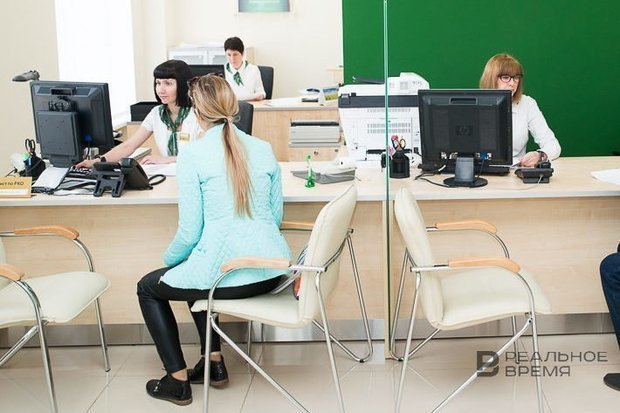‘Time to live and time to borrow’: consumer loans in Tatarstan nearly 60% up
Despite limits on the issue of highly risky loans, the consumer loan market demonstrated growth in early 2023

A rise in consumer loans is taking shape in Russia again. The biggest amount of loans was issued in Moscow — almost 130 billion rubles. Tatarstan is sixth in the country — 38.1 billion rubles of consumer loans were granted in the republic. Amid sanctions last year, consumer loans in Tatarstan fell to 23.9 billion rubles during the first months. Read in Realnoe Vremya’s analytic report if the market can recover its pre-crisis levels of 2021, what caused the unexpected consumer optimism, why the average bill is growing and if banks are ready to lend previous amounts of money.
The issue of consumer loans (loans issued to buy consumer goods) in Tatarstan surpassed 38 billion rubles during the first four months of 2023 — this is nearly 60% more than during the same period last year, reads data of the National Credit History Bureau (NCHB).
The republic ranks sixth among Russian regions in the amount of consumer loans. It is behind Moscow (129.2 billion rubles), Moscow Oblast (86.4 billion rubles), Saint Petersburg (55.5 billion rubles), Sverdlovsk Oblast (42.1 billion rubles) and Krasnodar Krai (42 billion rubles).
According to the bureau, the top most active Russian regions in the issue of consumer loans also includes Bashkortostan (31.3 billion rubles), Chelyabinsk Oblast (29.4 billion rubles) and Khanty-Mansi Autonomous District (28 billion rubles).
A total of 1.22 trillion rubles of consumer loans were granted in Russia from January to April 2023, or 57.6% more than during the same period last year (0.77 trillion rubles in January-April 2022).
“The amount of consumer loans issued during the first months seriously increased compared to the same period in 2022. This is mainly related to the low base effect because of the fall in the issue last March-April, after that, the situation in this segment of retail lending stabilised,” notes Marketing Director at the bureau Alexey Volkov. “The dynamics of the average consumer loan that has significantly increased recently reaching record-high numbers this spring is noteworthy too.”
According to him, banks in general continue sticking to a conservative policy but they are ready to grant “quality” borrowers a much higher amount.
The market can grow during a crisis too
Direct quantitative restrictions on lending have been in force in Russia since 2023 — macro-prudential limits that allow the Central Bank to restrict the issue of highly risky loans. When assessing consumer loans in the country in April, Russian Bank Chairwoman Elvira Nabiullina named its growth pace “normal.”
“During the previous years we discussed that consumer lending was growing too fast, people with a big debt burden are granted loans, they end up in a credit trap. And we, on the contrary, cooled down and stopped this market,” Nabiullina said, “Now, we think consumer lending is recovering at a normal pace after such a plummet.”

Photo: realnoevremya.ru
Sberbank said that mostly consumer loans for a period of less than a year are taken out today — 35% of the total number of agreements signed, the loans for a period of more than five years amount to 34%. The audience from 35 to 45 years is the most active category of the population. Mainly women take out loans.
Bank of Kazan forecasts a recovery of consumer lending in 2023 if the external background is neutral. “We see a stable rise in the amount of consumer loans. For instance, the growth by May was 11%. This is we look at the goals of 2023 optimistically,” the bank noted.
It is early to talk about the bounce back to the level of 2021 because the market has additional regulatory restrictions and doesn’t have a fully-fledged recovery of consumer demand, Bank of Kazan said. The unstable news background impedes consumer loans from growing too — there is a clearly seen connection between strong newsworthy events and consumers’ behaviour model in the market. The average bill always grows amid changes. The growth of prices, a client’s desire to meet the needs right away, a change in banks’ strategy leads to a bigger loan amount.
In general 2023 shows that the market can grow in a crisis when adapting to new conditions. Today banks refused the 2022 restrictions and are ready to issue previous amount of loans.
Banks ready to raise limits for verified clients
“Consumer loan issue is gradually recovering during the market stabilisation. However, banks stick to a less risky credit policy due to the ongoing economic uncertainty that impedes forecasting the solvency of potential borrowers,” comments Junior Director of Bank Ratings at Expert RA agency Anatoly Perfilyev. “Also, the regulator’s measures taken to reduce the debt burden of the population has a constraining impact on the dynamics of consumer loan issue, which excludes some clients who have a low income or unofficial income.”
“As a consequence, banks prefer verified clients and are ready to raise loan limits for them to provide a growth of their portfolio, which together with inflation (pricier products and services) has a direct impact on the rise in the average consumer loan amount,” explains Perfilyev.
According to his forecasts, consumer loan amounts have the potential for reaching the growth seen in 2021.
The existing incomes do not meet people’s needs

However, the expert thinks the existing incomes of the population don’t meet people’s needs and they have to borrow. The economic situation in Russia in general has stabilised but the growing deficit of workforce strengthened the population’s confidence in the conservation of current incomes. “The pent-up demand that was created during the previous years because of the pandemic and the special military operation plays a role too,” he considers.
The growth of consumer loans will depend on banks’ interest rates and the situation in the labour market. It will likely go on, Shaykhmetov forecasts.
Consumer loan issue in May reached record numbers

The amount of consumer loans is behind the number in early 2021 because of quite a difficult situation in the economy that is just starting to recover after the crisis provoked by sanctions as well as higher geopolitical risks, the expert notes.
“In such conditions, banks continue announcing stricter requirements for borrowers (though these requirements have notably softened compared to last year), whereas citizens are cautious about augmenting their debt burden,” comments Dodonov.
Seemingly, the measures of the Russian Central Bank to constraint retail lending play some role too. “Nevertheless, people are gradually refusing the saving behaviour model — particularly the data of Frank RG can speak about this. According to this data, the issue of consumer loans in the country in May reached a record 662.5 billion rubles,” the analyst of Finam puts an example.
Consumer loans will go on being widespread in the next few months. However, the numbers of 2021 will unlikely be reached, he predicts. And due to the measures of the Russian Central Bank aimed to cool this segment down — macro-prudential limits will be additionaly tightened from the third quarter.
Pent-up demand effect in force
Considerable loan issue both in non-secured retail loans and car loans in spring can be related to the pend-up demand effect, Vice Director of National Credit Ratings Yegor Lopatin doesn’t rule out.

In the absence of new macroshocks, one can expect moderate dynamics in the sector. Nevertheless, the credit activity is unlikely to recover and reach the level of 2021. National Credit Ratings forecasts the portfolio of non-secured loans this year will add up 12-15%.